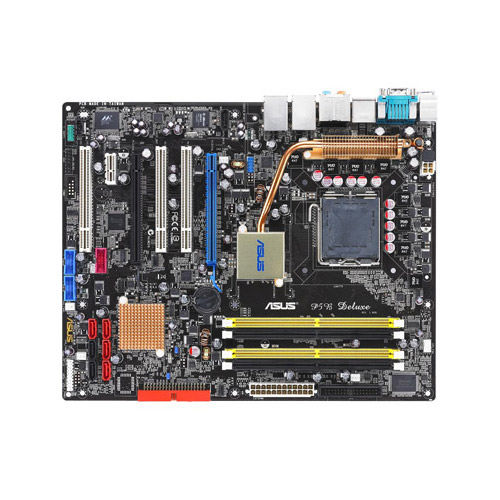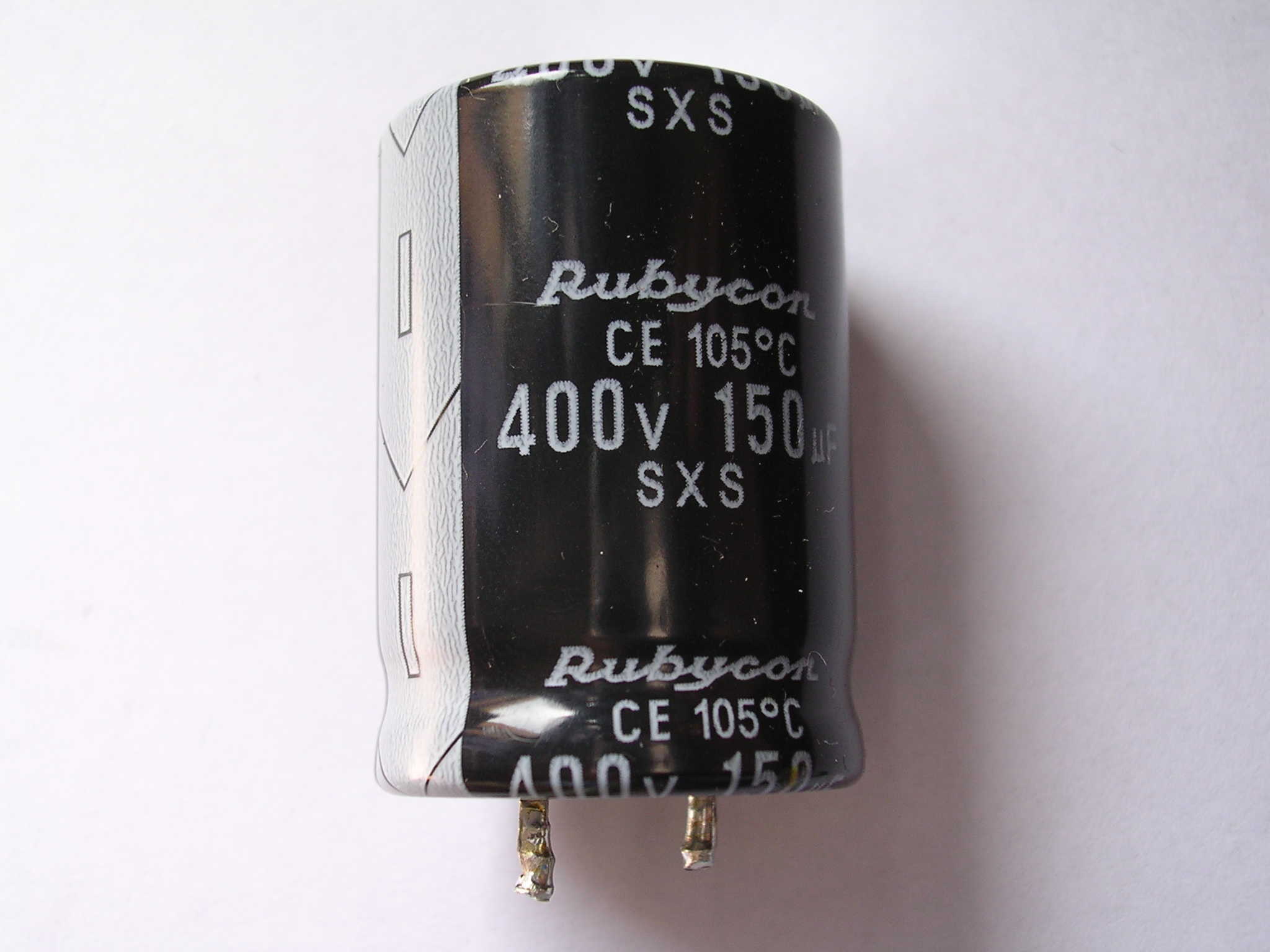I got back from vacation, sat down at my computer, hit the "on" switch, all the fans would spin up but then nothing. The screens wouldn't turn on and I couldn't even get access to the BIOS. It was dead!
Don't you hate it when that happens? It could be almost anything. Before leaving on vacation I had added brand-new RAM. I figured it was worth tinkering with RAM to see if that was the problem. No, removing new RAM didn't help.
The next suspect was my power supply. I had already had a computer die in a similar fashion due to a funky power supply. What can happen is the power supply still provides power but doesn't provide it at the right voltage or at a steady voltage. If you stick a voltage meter onto the power supply you may get the right voltage displayed but as soon as you start to draw any amps you can get sudden voltage drops which cause the computer to crash. So I went out to my friendly, neighborhood computer store and got a new power supply. When I got home I hooked everything up turn it on and it still didn't work.
If it wasn't the power supply, the next logical thing would be the motherboard. This filled me with dread. While I often brag to my friends and colleagues that I had built my computers from scratch, in truth the man from the computer store had built it. All I had done was chosen the components. Changing the motherboard wasn't something I looked forward to. If I was going to do this, I might as well make damn sure that it was the motherboard that had died and not something else.
If you take a modern computer and remove everything from the motherboard you should still get a beep when you turn on. Well, you should still get a beep if you hadn't been stupid enough to remove the PC speaker when you'd removed everything else. I had arranged things so that this was impossible as I had never bought a PC speaker for the new PC in the first place. I had an old computer, however, which had a PC speaker. This was convenient. I plugged in the PC speaker (which is quite an adventure in old-school, giant pin array connectors) and turned on the computer to see if I could get it to beep. The PC didn't beep. This made me very unhappy and I decided to go onto the Internet to see if anyone had similar symptoms.
I found a note in one of the forums that someone had a similar issue with their machine and had left it off overnight and turned it on in the morning and it booted up. I also remembered that I had a similar issue with my Macintosh G4 computer and the problem had turned out to be a flat battery. I tried removing and re-setting the battery but that didn't help. So I left it for a few hours while I went out to collect some lunch and go talk to the man at the computer store about motherboard warranty replacements.
After lunch I was quite surprised when I turned on the machine and it beeped at me. After connecting a few more components and restarting the machine it beeped at me again although it sounded distinctly sick. Instead of a short, sharp beep it was just a long, droning tone. This isn't how a computer is supposed to sound when you start it up. I decided to leave it until the morning.
 The next day I suspected that I would probably only get one good boot out of the machine, assuming I would do anything at all, so I decided to hook up as many components as I needed to use it and then try to boot. To my shock it actually worked and I managed to get into the BIOS and browser around BIOS menus. It then promptly crashed and all subsequent attempts to reboot it failed with the symptoms I had originally. I couldn't even get it to beep anymore with nothing connected. This was definitely a motherboard issue. A working motherboard should beep when you turn it on!
The next day I suspected that I would probably only get one good boot out of the machine, assuming I would do anything at all, so I decided to hook up as many components as I needed to use it and then try to boot. To my shock it actually worked and I managed to get into the BIOS and browser around BIOS menus. It then promptly crashed and all subsequent attempts to reboot it failed with the symptoms I had originally. I couldn't even get it to beep anymore with nothing connected. This was definitely a motherboard issue. A working motherboard should beep when you turn it on!My old motherboard was a P5B Deluxe. It is super awesome when it's not broken and I wasn't looking forward to trying to find a replacement. Luckily, Asus was making a motherboard that is practically a drop-in replacement except that instead of using three and a half year old technology (older actually) it used state-of-the-art two year old technology. Well actually, this isn't fair. The motherboard uses components that are brand-new and the board was only released last fall. It just uses a design that's based on a chipset that's about two years old. It also works with just about every type of 775 socket CPU and DDR two RAM which is good because that's what I have.
The motherboard has the rather ridiculous name of P5Q Turbo Pro. There's something very interesting in the motherboard's description on the Asus website that might not jump out at you. Here's the list of features for motherboard:
- ASUS 8-Phase Power Design
- TurboV / Turbo Key
- ASUS EPU
- ASUS Drive Xpert
- 100% All High-quality Conductive Polymer Capacitors! (VRM 5000hrs lifespan @105°C, 500,000hrs @65°C)
The important line there is the last one. "100% all high-quality conductive polymer capacitors!". Now, if you want to sell a motherboard to somebody you need to know what the important selling points are. Given that people's attention span is limited you can really only give the top five features of the motherboard before people lose interest. It's very telling that Asus has, as one of its five most important features, that it has "high-quality conductive polymer capacitors". The reason it's very important that this board has high-quality capacitors is because the board I have doesn't. That's the reason it broke. Probably....
 It's been called the capacitor plague. Essentially, some Chinese company stole a secret formula for making capacitors from IBM. Unfortunately the formula wasn't finished. If you actually built a capacitor using this formula they would tend to fall apart after about three years. Since computer manufacturers generally don't care where they get capacitors from, or perhaps I should say they *didn't* use the care where they get capacitors from, just about every manufacturer had at least one batch of these bad capacitors in their products. This means that their products died after about three years. Add to this the fact that the standard industry warranty is three years and you have a big mess. Ask Dell.
It's been called the capacitor plague. Essentially, some Chinese company stole a secret formula for making capacitors from IBM. Unfortunately the formula wasn't finished. If you actually built a capacitor using this formula they would tend to fall apart after about three years. Since computer manufacturers generally don't care where they get capacitors from, or perhaps I should say they *didn't* use the care where they get capacitors from, just about every manufacturer had at least one batch of these bad capacitors in their products. This means that their products died after about three years. Add to this the fact that the standard industry warranty is three years and you have a big mess. Ask Dell.Did I mention I hate bad capacitors that? Yeah, I'm pretty sure I have.
So anyway, my three and a half year old motherboard (out of warranty) was dead and I needed to get a new one. In the end I bought the Asus P5Q PRO Turbo. It works! My computer is back. I'm quite happy with it. It's essentially my old motherboard but better in lots of little ways. For example, it's more power efficient and faster. It's also not as expensive as the original motherboard. It turned out to be about 50% more expensive than the power supply. I didn't even need to reinstall Windows. How cool is that?
So that's the story of my motherboard. Maybe later I'll tell you the story of what happened to my CPU later that week.






No comments:
Post a Comment